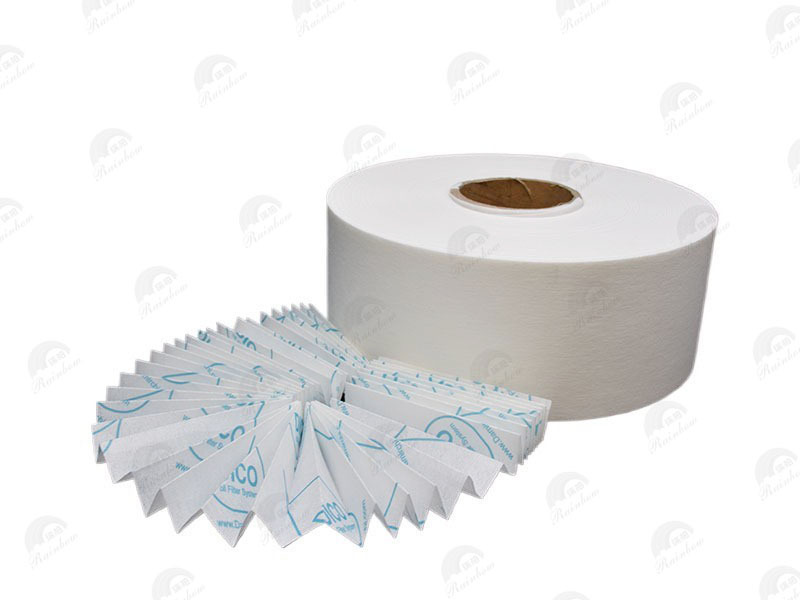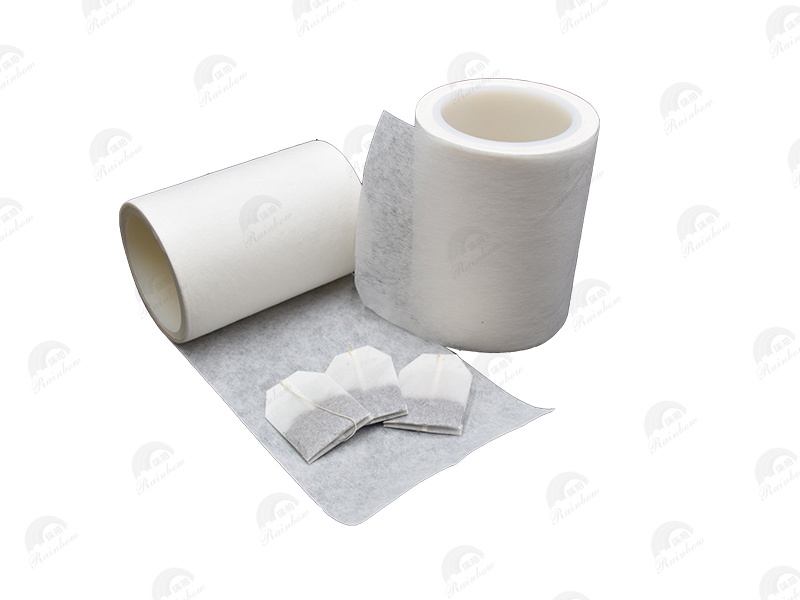Innovative Uses for GRS Certified Nonwoven Interlining in Fashion Design
Release time:
2025-06-25
Innovative Uses for GRS Certified Nonwoven Interlining in Fashion Design
In the ever-evolving world of fashion design, sustainability has become a cornerstone of creativity and innovation. As designers increasingly look for materials that align with eco-conscious principles, GRS (Global Recycled Standard) certified nonwoven interlining has emerged as a game-changer. This article delves into the innovative uses of GRS certified nonwoven interlining, exploring its unique properties, benefits, and diverse applications in modern fashion design.
Table of Contents
- Understanding GRS Certified Nonwoven Interlining
- The Importance of Sustainability in Fashion Design
- Key Properties of Nonwoven Interlining
- Innovative Applications of GRS Certified Nonwoven Interlining
- Enhancing Structure and Support in Garments
- Contributing to Eco-Friendly Fashion Design
- The Future of Nonwoven Materials in Fashion
- Frequently Asked Questions
Understanding GRS Certified Nonwoven Interlining
GRS certified nonwoven interlining is a versatile material made from recycled fibers, designed to provide structure, support, and stability to garments. The GRS certification ensures that the material meets stringent environmental and social criteria, including responsible sourcing, production practices, and traceability. This standard offers designers a reliable way to incorporate sustainable materials into their collections without compromising on quality or performance.
The Importance of Sustainability in Fashion Design
As consumers grow more environmentally conscious, the demand for sustainable fashion has surged. Designers today are challenged to create innovative pieces that not only appeal aesthetically but also align with eco-friendly practices. Utilizing GRS certified nonwoven interlining allows designers to make significant strides towards reducing their carbon footprint while encouraging responsible consumption.
The Role of Sustainable Materials
Incorporating sustainable materials, such as GRS certified nonwoven interlining, plays a crucial role in minimizing waste and promoting ethical manufacturing processes. By choosing materials that are both recycled and recyclable, designers can significantly reduce their environmental impact, driving the fashion industry toward a more sustainable future.
Key Properties of Nonwoven Interlining
One of the standout features of nonwoven interlining is its unique composition and properties. GRS certified nonwoven interlining boasts several advantages, making it a preferred choice for many designers:
1. Lightweight and Breathable
This material is lightweight, allowing for comfortable wear without adding unnecessary bulk. Its breathability ensures that garments maintain a pleasant feel against the skin.
2. Excellent Stability
GRS certified nonwoven interlining provides exceptional stability, helping garments maintain their shape and structure throughout their lifecycle, even after multiple washes.
3. Versatile Applications
Its adaptability allows for a wide range of applications, from providing reinforcement in tailored suits to enhancing the drape of dresses and skirts.
4. Easy to Work With
The ease of cutting, sewing, and adhering to various fabrics makes it a favorite among fashion designers. The material's compatibility with different textiles expands its usability across diverse collections.
Innovative Applications of GRS Certified Nonwoven Interlining
The versatility of GRS certified nonwoven interlining opens up numerous avenues for innovative design applications:
1. Tailoring and Structured Garments
In tailored pieces such as blazers and trousers, using GRS certified nonwoven interlining provides essential structure and support. It enables designers to create sharp lines and a polished look, ensuring that garments maintain their intended silhouette.
2. Enhancing Drapery in Evening Wear
The lightweight and breathable nature of GRS nonwoven interlining is ideal for evening wear. By strategically placing this material, designers can enhance the drape and flow of fabrics, creating stunning visual effects in gowns and dresses.
3. Eco-Friendly Accessories
Beyond garments, GRS certified nonwoven interlining can also be utilized in accessories. From bags to hats, it offers a sustainable option for designers looking to create high-quality, fashionable items without compromising their environmental values.
4. Functional Fashion
In the realm of functional fashion, GRS nonwoven interlining can be incorporated into sportswear and outerwear. Its lightweight properties help maintain comfort while providing necessary structure and support.
Enhancing Structure and Support in Garments
Garment structure is essential for achieving the desired fit and aesthetic. GRS certified nonwoven interlining plays a pivotal role in enhancing the structural integrity of various clothing items. Whether it’s a structured coat or a flowing dress, this material helps tailor the garment to the fashion designer's vision.
Using in Collars and Cuffs
In tailored shirts, collars, and cuffs often require additional support to maintain their shape. GRS nonwoven interlining can provide the necessary stiffness, ensuring that these elements stand out while remaining comfortable for the wearer.
Reinforcing Waistbands and Hems
In skirts and pants, GRS certified nonwoven interlining can reinforce waistbands and hems, giving garments a polished finish and preventing stretching or distortion over time. This attention to detail contributes to the overall longevity of the piece.
Contributing to Eco-Friendly Fashion Design
Eco-consciousness is not just a trend; it’s a movement that is reshaping the fashion industry. GRS certified nonwoven interlining aligns perfectly with this movement, contributing to eco-friendly fashion design in several ways:
1. Reducing Waste
By utilizing recycled materials, designers actively participate in reducing textile waste, a significant issue within the fashion industry. This approach not only conserves resources but also promotes recycling initiatives.
2. Supporting Ethical Practices
GRS certification ensures that the nonwoven interlining is produced through sustainable practices, supporting fair labor conditions and responsible sourcing. This commitment to ethics resonates with consumers who prioritize social responsibility in their purchases.
3. Promoting Circular Fashion
Incorporating GRS certified materials into designs encourages a shift toward circular fashion, where products are designed for longevity and recyclability, fostering a more sustainable cycle of consumption.
The Future of Nonwoven Materials in Fashion
The future of fashion design is undeniably intertwined with innovation and sustainability. As the industry continues to evolve, GRS certified nonwoven interlining will likely play a critical role in shaping upcoming trends. The push for sustainable practices will drive demand for advanced materials that offer both functionality and aesthetic appeal.
Technological Innovations
Looking ahead, advancements in technology could lead to the development of even more sophisticated nonwoven materials, enhancing their properties and applications in fashion design. These innovations will open doors for designers to explore uncharted territories in creativity and sustainability.
Frequently Asked Questions
1. What is GRS certified nonwoven interlining?
GRS certified nonwoven interlining is a sustainable material made from recycled fibers, designed to provide structure and support to garments while adhering to strict environmental and social standards.
2. Why is sustainability important in fashion design?
Sustainability is crucial in fashion design as it addresses environmental concerns, reduces waste, and promotes ethical practices, aligning with the growing consumer demand for eco-friendly products.
3. How does GRS certified nonwoven interlining enhance garment durability?
This material enhances garment durability by providing stability, preventing stretching or distortion, and maintaining the intended shape throughout the garment's lifecycle.
4. In what types of garments can GRS certified nonwoven interlining be used?
It can be used in various garments, including tailored suits, dresses, sportswear, and accessories, offering versatility and support across diverse fashion categories.
5. What are the benefits of using recycled materials in fashion design?
Using recycled materials reduces waste, conserves natural resources, supports ethical manufacturing practices, and promotes a sustainable cycle of production and consumption.
Conclusion
In summary, GRS certified nonwoven interlining represents a significant advancement in sustainable fashion design. By integrating this innovative material into their collections, designers can create beautiful, functional, and environmentally responsible garments. As the fashion industry continues to prioritize sustainability, the application of GRS certified nonwoven interlining will undoubtedly inspire future innovations, shaping a more eco-friendly and ethically aware landscape for fashion design. Embracing these materials is not just a trend; it is a commitment to a sustainable future in the world of fashion.
GRS Certified Nonwoven Interlining
Previous Page
Previous Page
Latest News
Nantong Rainbow Technology Co., Ltd.
Telephone:+86-13587673537
E-mail:chrislc717@163.com
Address: Group 42, Xizansi Village, Xiting Town, Tongzhou District, Nantong City, Jiangsu Province

Copyright©2024 Nantong Rainbow Technology Co., Ltd. | Powered by www.300.cn
Copyright©2024 Nantong Rainbow Technology Co., Ltd.
Powered by www.300.cn




